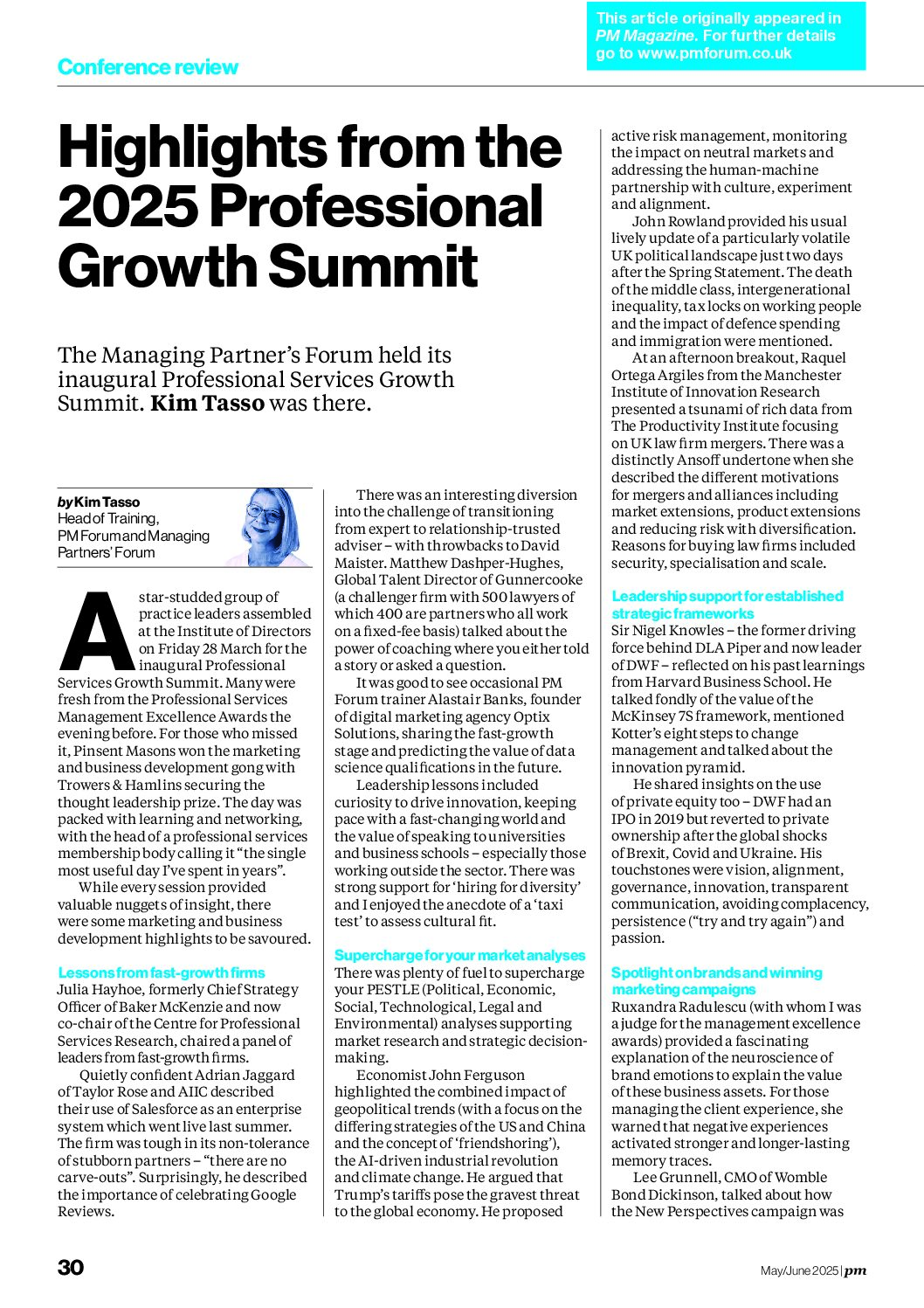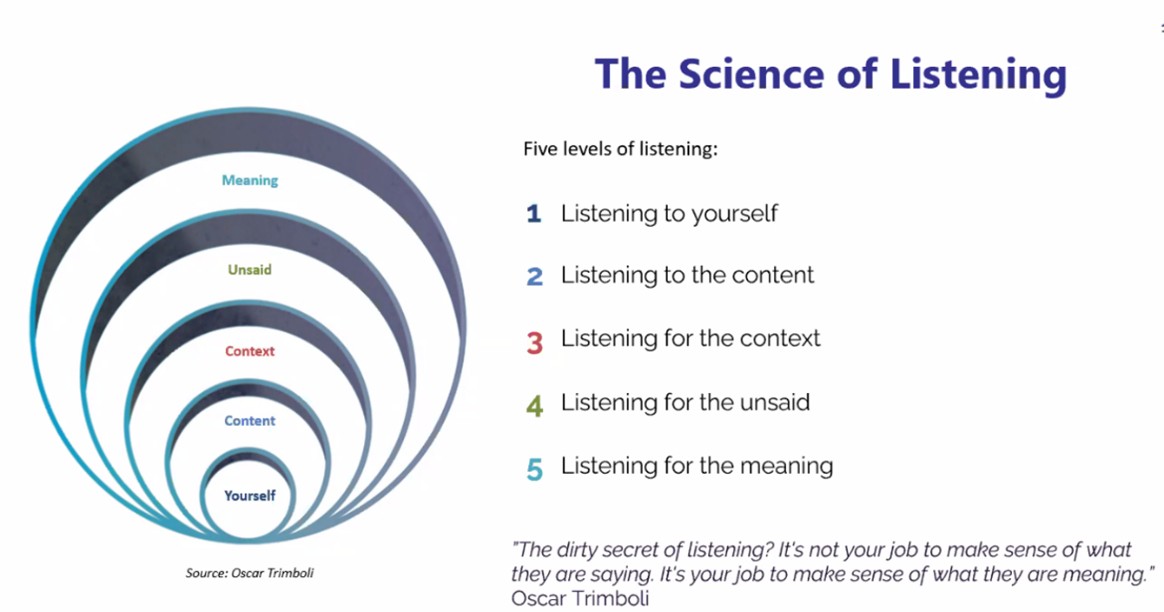
Differentiation is a question that is raised in many of my strategy and business development workshops for professional service firms. Differentiation is the process of identifying a difference between your own and competing products or services that has some value to clients. Differentiation provides sustainable competitive advantage. So this article considers some ideas for differentiation strategies and innovation.
Differentiation is a fundamental marketing concept for the mature markets of the legal, accountancy and property professions. From a strategic perspective, the only alternative – according to Michael Porter – to differentiation is cost leadership. Differentiation allows prices to be higher than for commodity products which raises profits and the morale of intelligent, hard working professionals.
Differentiation through brand
One of the most common strategies to achieve differentiation is branding. Whereas reputation relates to the sum of all past experiences, brand is a promise for future service.
A successful brand is defined as “An identifiable product, service, person or place augmented in such a way that the buyer or user perceives relevant, unique added values which match their needs most closely. Furthermore, its success results from being able to sustain these added values in the face of competition”.
The critical element here is perception – value lies in the eyes of the client. Whilst the benefits of brand leadership are clearly recognised (e.g. the brand leader in most segments enjoys superior profits), so too are the costs and effort required to build and sustain a brand.
Differentiation through segmentation and niches
Another popular strategy for differentiation is through segmentation and the creation of niches. Many firms have adopted a sector approach. Boutique firms enjoy superior profits. They differentiate by having a deep knowledge of a particular sector or niche. They add value to clients by tailoring their services to meet the very particular needs of the sector or niche. This is a particularly useful strategy to smaller firms.
Innovation is another one of those strategies. Doblin identified 10 types of innovation through categories of finance, process, offerings and delivery. Dr Chris van der Hoven of Cranfield, in 2011, developed a model where innovation played a key role in his 6D model of how innovation contributes to growth strategies.
Some background on innovation in the professions
The Chartered Institute of Marketing (CIM) has a great course on innovation in marketing.
It’s fair to say that despite the recognition that innovation is important, there’s been a poor track record within the risk-averse professions that rarely have an R&D function or a management process for innovation. But it is encouraging that more firms have technology or product development teams – LegalTech is a growing trend. It’s often left to the mavericks within a firm to have an idea and push for its adoption.
As far back as 1997 when David Maister published his seminal book “True Professional”, innovation appeared in a number of his eight dimensions on professional service firm distinction – for example: innovative hiring practices, unique problem-solving methodologies and R&D excellence.
In the early 2000s, Richard Susskind was trailblazing his view on the importance of innovation as a result of the impact of technology on the legal profession and litigation in particular Many of the legal awards developed category for mould-breaking or innovative firms but often the winners’ efforts didn’t compare well to innovation in other commercial sectors such as retail, technology, transport and manufacturing.
I wrote a blog post about a conference speech on my own early model of sources of innovation back in 2009 . I considered how ideas for innovation could be found in studying competition, client research, your staff, maverick clients, client journey mapping (CEM), efficiency reviews, new service development and segmentation/niches strategies.
In 2010, I wrote a White Paper in conjunction with econsultancy about the possible impact of social media to innovate in the communications and sales strategies of professional service firms . And in 2012, I published another White Paper considering how the professions were missing innovation opportunities in the mobile revolution.
In 2012 at a conference I polled lawyers for their views on innovation. Even then 63% of lawyers thought innovation was critical for survival. But there was minimal action.
I looked at some examples of innovation in small law firms in 2013 which suggested that finally firms were getting the message. 2013 was also the year that the late Laurie Young published his book on thought leadership which was becoming a business, research and communications strategy increasingly used by professional service firms to differentiate. And some of those thought leadership campaigns led to real innovation in terms of service propositions and delivery. A recent example (April 2019) is Royds Withy King product for private clients.
It was also good at that time to hear about the excellent work at Allen & Overy using external consultants such as Richard Susskind and Laurie Young to fuel the work of their innovation committee.
In 2016 The Law Society published an excellent paper on the future of the legal profession – containing a useful PESTLE, SLEPT or PEST analysis. The report authors commented “Innovation in services and service delivery will become a key differentiating factor”.
There was renewed interest in innovation as competition became fiercer and technology advances provided a plethora of ways for professional service firms to disrupt markets and work differently. The ecommerce disruption in the property sector and the rise of the PropTech segment is testimony to this.
Legal Futures magazine reported on The Law Society’s annual statistical report in June 2017 that Alternative Business Structures (ABS) account for just 5% of all law firms but nearly 12% of total turnover in a market worth £22.3 billion. Perhaps it is the innovative business structure or the more innovative approach to providing legal services that helps the ABS.
There has been incredible innovation during the Covid crisis. But mostly through the need to work at home and deliver services remotely. I am particularly excited by the opportunities available to be innovative with client experience and events through technologies such as AR, VR and XR.
Differentiation strategies and innovation
Returning to my earlier model of innovation, there are a variety of ways to prompt creative (within individuals) and innovative (within organisations) thinking. Of course, coming up with ideas is only the start and there needs to be a process for developing ideas, assessing their feasibility, aligning them with the firm’s strategy, checking their value with the market, developing project plans (or agile development processes) and allocating the necessary resources to implement and exploit them.
Market and client research
One of the exercises I use is a rapid-fire presentation of research reports from markets, client groups and target groups and ask professionals to brainstorm how they can respond to new, emerging and imminent needs. (This this six minute video on marketing audits and environmental analysis to fuel your research for these exercises).
A common misconception is that innovation has to be far-reaching and fundamental. There needs to be a greater awareness of incremental innovation that can have a profound impact.
Innovation throughout the marketing mix
Often, the focus is on innovation in the service or product being offered. But there is also plenty of scope to innovate in other aspects of the marketing mix – particularly in pricing and communications.
(Watch this six minute video for an introduction to the 4Ps of marketing)
Client Experience Management (CEM) and client journey mapping
Another approach is to invest time and effort in analysing client journeys and exploring where the clients perceive most value and where there are gaps where further value can be added. These can then help drive the innovation process.
There are several recent articles about CEM:
- Why CEM is all the rage (July 2017)
- CEM – Research into the client journey in law firms (July 2018)
- Client Experience Management (CEM) – Nine takeaways (Perspective, Emotions, Tension, Journeys, Involvement, Tangible, Systems, Technology, Process) (July 2019)
Technology solutions
Providing briefings on the functionality and potential of new technologies allows professionals to think about how they might take advantage to leap-frog the competition.
More importantly, this requires the older generation to stand back and hand over some of the thinking to the new generation – the digital natives – who often have a deeper understanding of the transformative power of technology and are not hindered by long memories and legacy issues. Digital transformation is fundamental.
Big data perspectives
We now have access to more information than we can possibly use. But where firms can interrogate big data, glean patterns and trends or identify weak signal they can obtain insights that drive innovative thinking.
Sadly, many professional service firms do not have the systems available to obtain the sort of detailed data that allows in-depth analysis of client behaviour and decision making processes. However, some of the latest systems – for example Intapp – are moving law firms in the right direction. And even provide predictive capabilities.
However, small scale studies into specific segments of the market or particular processes can reveal insights where innovation can follow.
Collaborative new product and service development
With some of the clients of my accountancy clients, I facilitate collaborative workshops with both professionals and their clients to think of ways together that we can be innovative in how we respond to existing client needs.
Recent research shows that collaborative innovation workshops are amongst the most-valued relationship building and value-adding activities that professional service firms can offer.
Creative swiping
One of my favourite concepts – from the great Tom Peters – is that of creative swiping. Essentially, this means looking at what happens in different industries, sectors and markets and assessing whether we can “swipe” good ideas to apply in our own markets.
This requires structured analysis of success in other sectors and an eagle eye to spot where there is the potential to apply ideas within the professions.
Pushing beyond boundaries
In the professions there is often a focus on the technical expertise. So exploring the related client needs in depth sometimes reveals areas where value can be generated by innovative approaches to collaborating or joint venturing with third parties to provide services that bundle up the professionals’ technical expertise with other product, service or relationship elements.
This is the creation of a new value proposition that comprises both the technical professional expertise and something beyond the boundaries of that expertise.
Naturally, in all innovation projects there is a need to consider the regulatory constraints and the commercial risks. But that is a different set of processes to those required to have the creative (idea) and innovative (monetisation) ideas in the first place.









